The Strangest Secrets Of The Ancient Sphinx Have Finally Been Revealed

The Great Sphinx Of Giza
Egypt, the country of the pharaohs and pyramids, never ceases to astound its tourists with the depth of its culture, mysteries, and ancient monolithic artifacts. The Great Sphinx Of Giza, a monumental figure with a human head and a lion’s body. It is one such impressive structure that leaves hundreds of thousands of onlookers speechless. This enormous Egyptian artifact was carved from a single piece of the nearby limestone bedrock. It is regarded as the oldest and largest sculpture ever discovered.
Mystery Behind Great Sphinx Of Giza
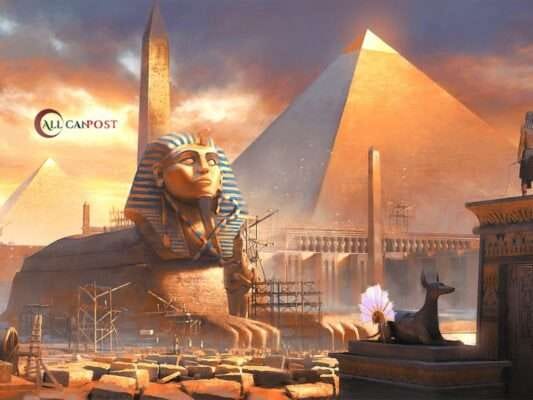
One of the biggest mysteries of ancient Egypt is the Great Sphinx of Giza. It is still unclear exactly when, by whom, and for what purpose it was constructed. According to the majority of historians and archaeologists, the sphinx was most likely constructed around 2500 BCE as a component of Khafre’s funeral complex, most likely to serve as a guardian of his tomb. As a result, the sphinx’s face is a likeness of the Pharaoh from the 4th dynasty.
Speculation over the Sphinx’s missing nose adds to the mystery surrounding it. There are numerous ideas about who destroyed it. But it is missing and would have been more than three feet (1 m) broad. Although illustrations created before the leader’s birth show the sphinx in its noseless state, dispelling that particular myth. It was initially attributed to Napoleonic forces.
About the Great Sphinx Of Giza
Although the primary motivation for building the Sphinx is still a mystery. Some historians and archaeologists think the statues were sculpted to protect sensitive locations. The Great Sphinx of Giza was also built to protect the three major pyramids of Giza, namely Khufu (Cheops), Khafre (Chephren), and Menkaura (Mycerinus).
Archaeologists think that this enormous sphinx was formerly painted colorfully, with a red face and a blue and yellow body. They assert that the Sphinx formerly had a thick beard and a nose, but that those features have since vanished.
History Of The Great Sphinx Of Giza
The Great Sphinx of Giza is located in Egypt directly in front of the Great Pyramid of Giza. It was constructed about 2500 BC during the Fourth Dynasty of the Old Kingdom. The Great Sphinx of Giza is a magnificent structure that faces east and glitters with the rising light every morning. Its length and height are 73 meters and 20.21 meters, respectively. The Sphinx was buried beneath the desert, and Tuthmosis IV, the pharaoh, made the first known attempt to remove the sand in 1400 BCE.
When Napoleon visited Egypt in 1798, the enormous monument was once more buried in the sand to its neck following several rebuilding attempts. From 1816 until 1858, several excavation initiatives were carried out to clear the sand by renowned antiquarians including Giovanni Caviglia, Auguste Mariette, and Gaston Maspero. Still, they were compelled to give up because of the sand.
The Great Sphinx Of Giza FactsThe Missing Nose
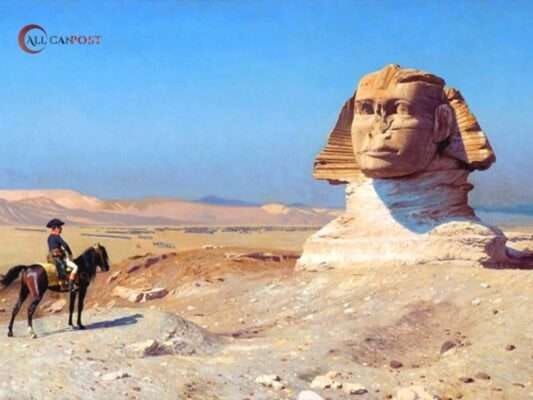
The missing one-meter-long Sphinx nose is the subject of numerous rumors and conjectures. When Napoleon visited Egypt in 1798. Several people charged that his men were the main perpetrators of the destruction of the nose. There is also a ton of proof that Muhammad Sa’im al-Dahr, is a 15th-century Sufi Muslim cleric. He was responsible for the destruction of the Sphinx’s nose. Muhammad shattered the nose in a fit of passion because he disapproved of people who worshipped the Sphinx.
The Beard Of The Great Sphinx
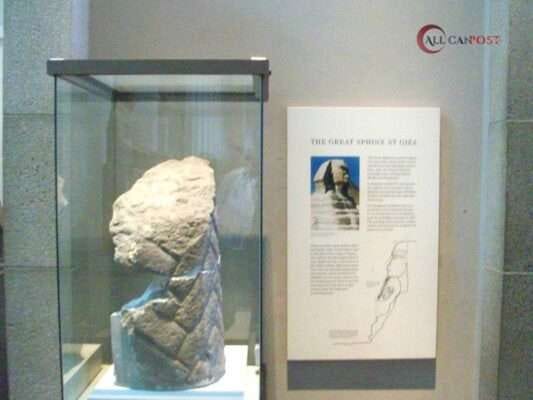
This monolithic sculpture allegedly reportedly had a beard as well, but it eventually collapsed owing to natural sand erosion, according to archaeologists. The Sphinx is now on exhibit in the British Museum in London. It had a piece of the missing bread discovered between its front paws in the 19th century.
The Multicolored Sculpture
There are a few remnants of red paint on the Sphinx’s face, despite the monument’s extensive wear and tear from erosion and strong winds over thousands of years. This suggests that the Sphinx was once a vibrant sculpture. On the Sphinx’s body, you can also see certain blue and yellow ruins.
The Secret Chamber Of The Great Sphinx
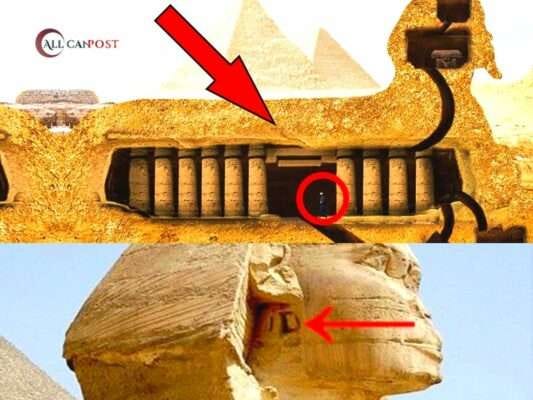
It is true that beneath the statue is a hidden chamber that is more than just a secret. Because ancient scriptures refer to a secret room named “The Temples of Thoth,” where the wisdom of antiquity would have been stored, it is frequently assumed that there are other chambers inside or underneath.
There’s no doubt that both Romans and Arabs looked for the hidden chambers under the statue since they shared this belief. A tunnel was found in the northern region during an excavation in the 1980s, but it ended up in an empty hollow. There is currently no proof that the fabled archive chamber is anything other than a myth.
Places To Visit Near The Great Sphinx Of Giza
The sand was completely removed to reveal the base of this monolithic artwork during a series of excavations carried out between 1925 and 1936 under the direction of the French engineer Emil Baraizem, possibly for the first time. Check out these well-known sights around the Great Sphinx of Giza:
#1. Pyramids Of Giza
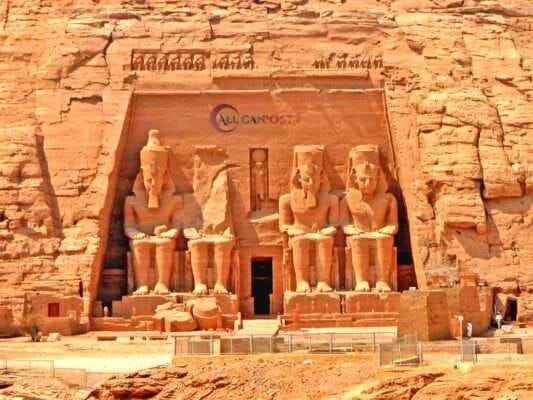
The Pyramids of Giza, a historic marvel of Egyptian culture, will astound you with their enormous height and perplexing structure. Three enormous pyramids built by Khufu (Cheops), Khafre (Chephren), and Menkaura can be found at this archaeological site (Mycerinus). It’s estimated that about 100,000 people were needed to finish building this enormous monument. The pyramids’ interior passageways, rooms, and galleries are also open for exploration.
#2. Giza Zoo
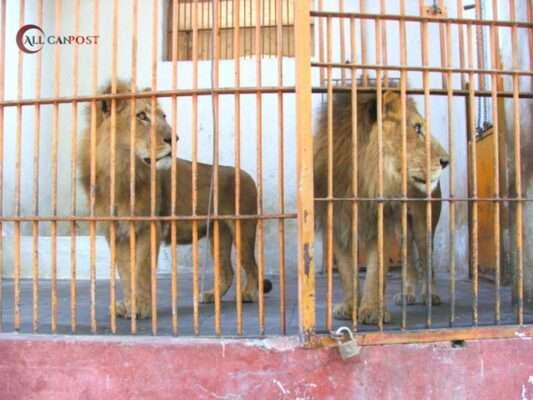
A trip to the magnificent Giza Zoo is unquestionably an adventure escape if you love animals. Numerous endangered animal species, such as Egyptian gazelles, mountain goats and rams, and herons, live in the zoo. Numerous magnificent bird species, including ibises, lovebirds, flamingos, vultures, falcons, and macaws, may be found at the zoo. A few other critically endangered animal species are present here, including the Egyptian cobra, tortoises, Nile crocodiles, and American alligators.
#3. Rock Temples Of Abu Simbel
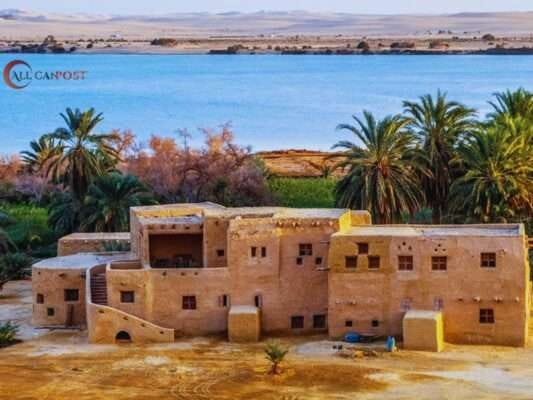
The spectacular Abu Simbel, another large sculpture, is one of Egypt’s main tourist destinations and is located close to the Sudanese border. The entrance’s four exterior rock statues of Ramesses II seated on thrones represent the majesty and magnificence of Egyptian civilization. Due to severe flooding, the temple had to be moved from its original location. It has received the UNESCO World Heritage Site designation.
#4. Oasis Of Siwa
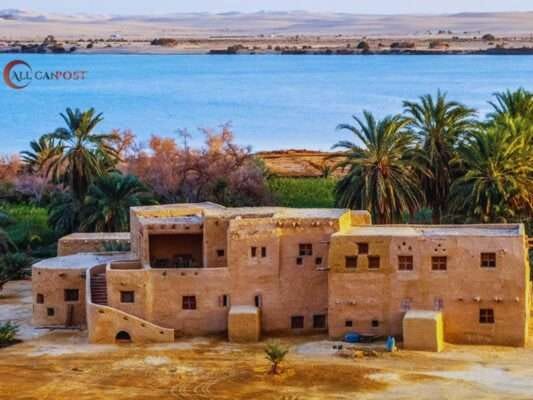
The serene Oasis of Siwa is tucked away in a sandy desert and is bordered by hectares of date palms and free-flowing freshwater springs. Thirty thousand people live there, making it one of Egypt’s most remote towns. This secluded sanctuary is very well-liked by tourists looking for a relaxing getaway in a peaceful environment. However, due to the location’s extreme isolation and lack of amenities, we do not advise using it as a base of operations.
The Great Sphinx Today
The Sphinx is still one of Egypt’s most magnificent structures and offers a fascinating insight into the culture, history, and architectural accomplishments of the ancient civilization, even though it is missing a nose, and a beard, and is no longer painted in the vibrant colors that once covered it; additionally, its body may have been buried in the sand for centuries.
